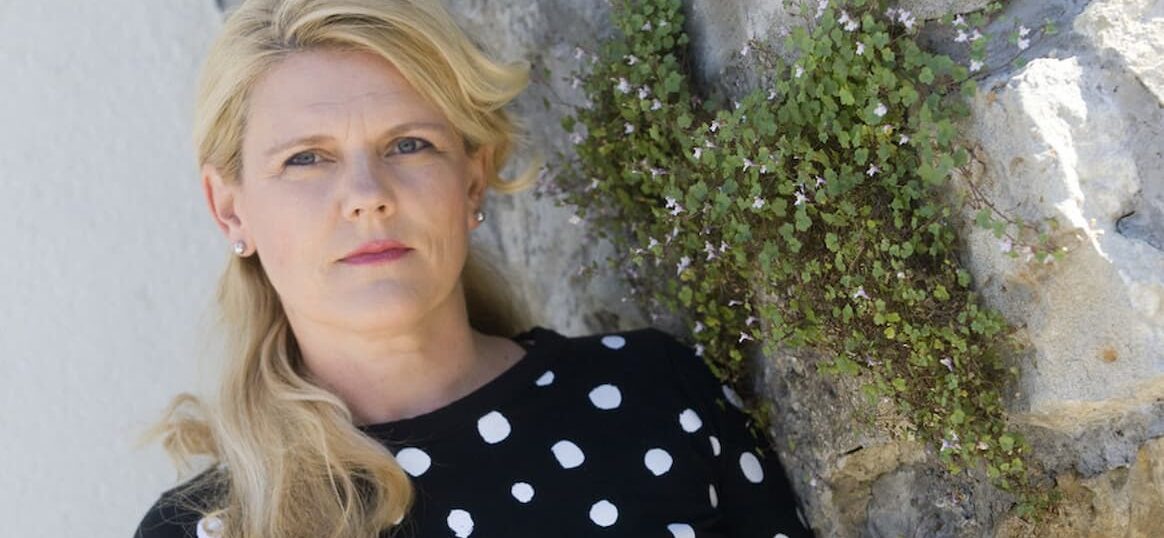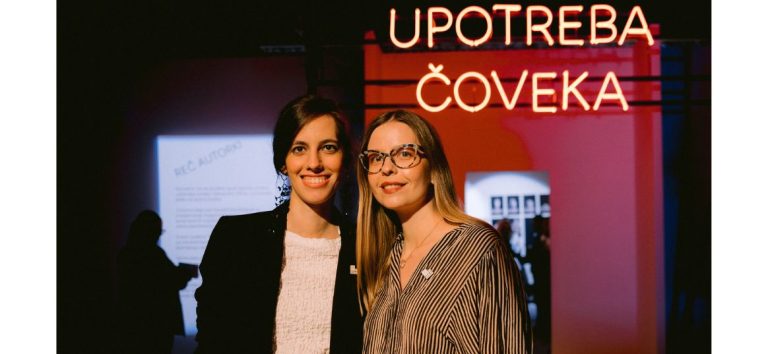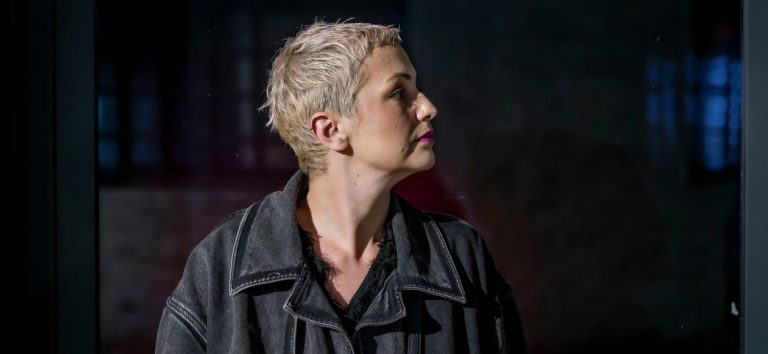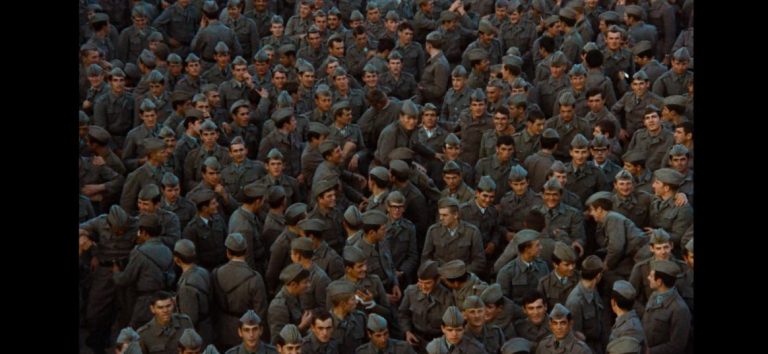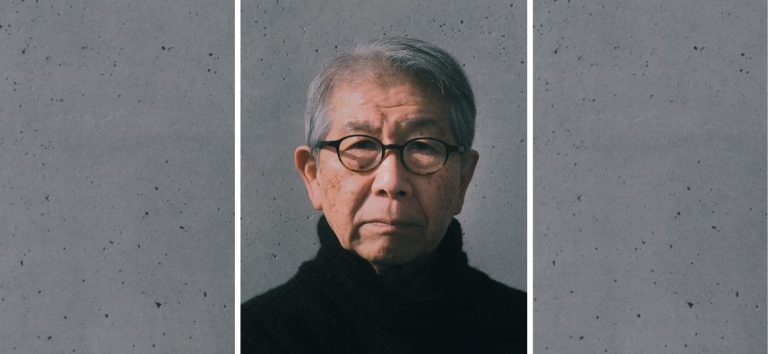As part of the closing programme of the Schools of the Future, in which artists hold classes, we will step into the unknown and unexplored with the project From Choir in Movement to Choral Theatre, which takes place in Novi Sad until 30 April. On this occasion, the European Capital of Culture will host Slovenian conductor Karmina Šilec, who will host a workshop to present her artistic concept Choregie and how it contributes to the theatrical performance of choral performances.
Karmina Šilec is a world-famous conductor, composer, and director who brought a dose of freshness and originality to the world of music and theatre with her unique artistic concept Choregie. This talented and award-winning artist and a frequent guest lecturer at universities around the world is the leader of the world-renowned women’s choir Carmina Slovenica. Always bold and provocative in her work, Karmina Šilec transformed various vocal ensembles into top artistic formations of the highest rank, and now she is coming to Novi Sad to share her working methods with other conductors and choirs, such as the National Youth Choir of Serbia, founded thanks to ECoC.
We talked to Karmina about her impressive career, as well as the Choregie concept that takes traditional choral performance to a new level.
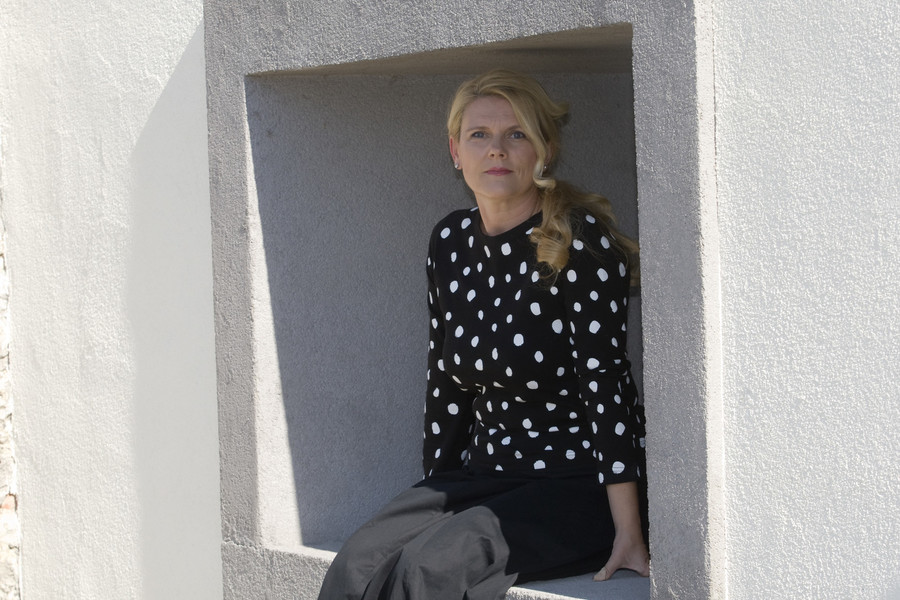
You will be a guest lecturer in Novi Sad as part of the programme From Choir in Movement to Choral Theatre, and you’ll present your working methods to other participants in this project in cooperation with the Youth Choir of Serbia. What are the new observations you will bring to Novi Sad and what do you expect from this project?
My major topic is a reconceptualization of choir/chorus as a musical theatre performer. The purpose of my lecture at EPK is to share with participants experiences of developing my artistic concept of Choregie. Choregie – New Music Theatre represents two fields: the artistic principle of creation of music and scenic/theatre projects, and the specific method which I developed to work with ensembles as preparation for Choregie projects.
Choregie is a form of music theatre which differs from opera, operetta, or musical; it is a multi-disciplinary art form. In Choregie, a ‘meta’ composition is created by positioning music and theatrical materials into a bigger structure. Diverse elements in the performances merge into one (movement, music, word, image, etc.). So, I hope this meeting will help enlighten anyone who is interested in learning about creative choral leadership, processes of conceiving new works, bringing music to the stage, and other essential skills that are needed to work in this field.
What is your experience in mentoring work on similar projects and how important is working with mentors for artists who improve their skills in this way?
It is all about creating moments when the hearts and spirits of participants are inspired and on their way to something new. I have many great experiences from giving lectures or leading workshops. I am always happy to see the sparkle in their eyes when participants get new ideas and motivation or are encouraged to try something different when they learn something that changes their future path. Certainly, it is very inspiring for each artist to have an opportunity to watch other artists work from up close, to discuss and open important questions.
What does Choregie entail and what is its innovation?
The word choregie has got roots in the Greek language, where choregs were supposed to be patrons of art, and the idea about developing the Choregie concept draws largely from the Greek tragedy and particularly the role of the chorus in it. The term ‘new music’ (New Music Theatre Choregie), however, refers to the music which represents the very base and a major part of all the projects – the music of our times, as well as to the music which is not commonly heard on stages and is thus considered new, such as medieval music, ethnic music or music taken from certain contexts, e.g. sociological or historical.
Treatment of voice, movement, light, image, sound, gesture and other elements of theatrical production in Choregie is based on musical principles and compositional techniques, and so musical thinking always applies to the performance as a whole. All these parameters create a ‘meta’ composition and so we can also understand Choregie as ‘composed’ vocal theatre.
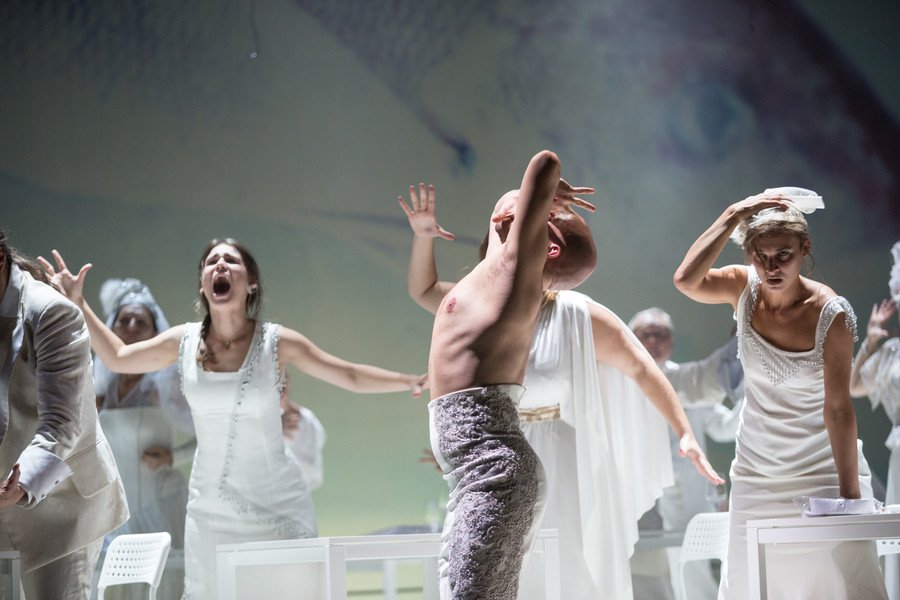
How would you characterise the importance of the theatrical choral programme and how does it differ from traditional choral singing?
We live in a time when adding movements (and sometimes some light design) to choral music became so very popular. I think everyone going into this field should answer a basic question if the music itself is not enough or are there stronger reasons to use any theatre elements (costume, movement, light…).
Music theatre is an art form itself, it is not music with any kind of ‘decoration’. I don’t think theatre elements should be there for the reason of attracting the audience, despite the fact that we live in a time when people need ever higher and higher stimulations. In a time when it is so (too) popular to add all kinds of elements to choral music, I believe that this is a very important issue to think about. Therefore Choregie is also a platform for the discussion ‘pro and contra’ of ‘staging’ choral music – from dramaturgical, aesthetic and even sociological perspectives.
When I conceive new work, I develop all elements simultaneously. That means that we do not study music first and then later add movement, props, words, and scenography as ‘side dishes’. So, in Choregie I don’t think about how the movement would complete a choral performance. Movements are used only where/if they are needed. Otherwise, we simply have a concert.
You are the head of the women’s vocal ensemble Carmina Slovenica, which has achieved global success. On one occasion, you stated that you prefer to conduct a women’s ensemble because women’s voices are the ‘most elastic’ and the most suitable for experimentation. Is that really so?
There certainly is some truth in the fact that girls and young women are very open to experimenting and trying new things. I am interested in using distinctive voices, unique voices. I prefer them to standardised and too academic voices. I like different colours, different qualities: low, nasal, bright, girlish, raw, soft voices, and even voices of smokers… All these are for me truly irreplaceable voices. Such a spectrum of different voices gives me a larger sonorous topography, a bigger spectrum of human vocal expressions.
It is also very important that performers understand and are capable of adapting to the organic whole of the ensemble, and they can subordinate their individual impulses to the rules of the collective. Thus, it is important they understand the discipline of adaptation of the body, the voice, the speech and drama elements to the project i.e., to the ensemble. And young people certainly are open to going for new and unexplored.
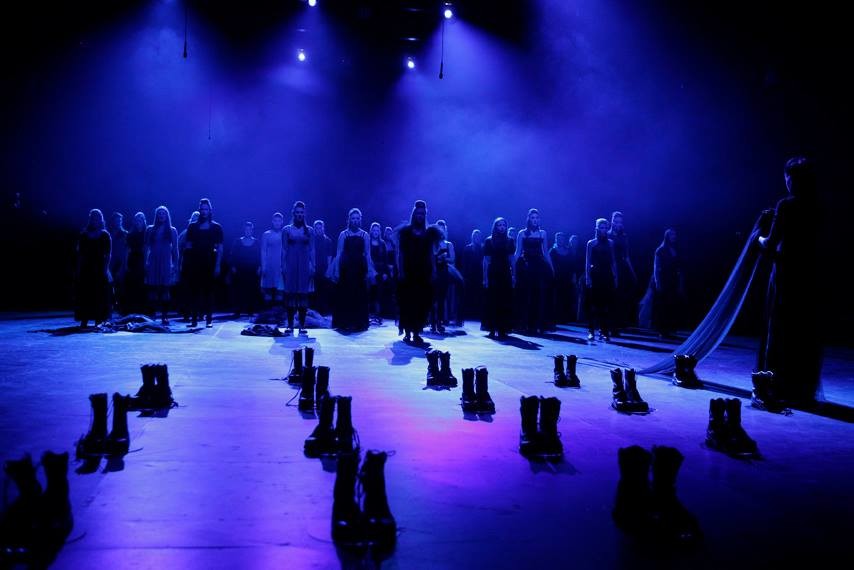
Your impressive biography says that you are a frequent lecturer at world universities, including the most prestigious in the US – Harvard. Is it more challenging to conduct an ensemble, compose music, or be an educator and advisor?
Well, all you mentioned is very challenging and rewarding in its own way. I like to conduct, I like to do staging, and I have nice experiences composing and teaching. Each of the fields I am active in is super exciting and I cannot rank what is my favourite. This also changes with time and circumstances.
Have you always known what you want to do and what drove you to become a conductor?
I first tried my hand as a conductor at the age of 16. Before that, I was having all kinds of ideas for my future profession, including such as being a physicist. But since then, I was sure that this is the real thing. At that time, I was a singer in many formations and sang under the direction of very good conductors, so inspiration came from those wonderful experiences.
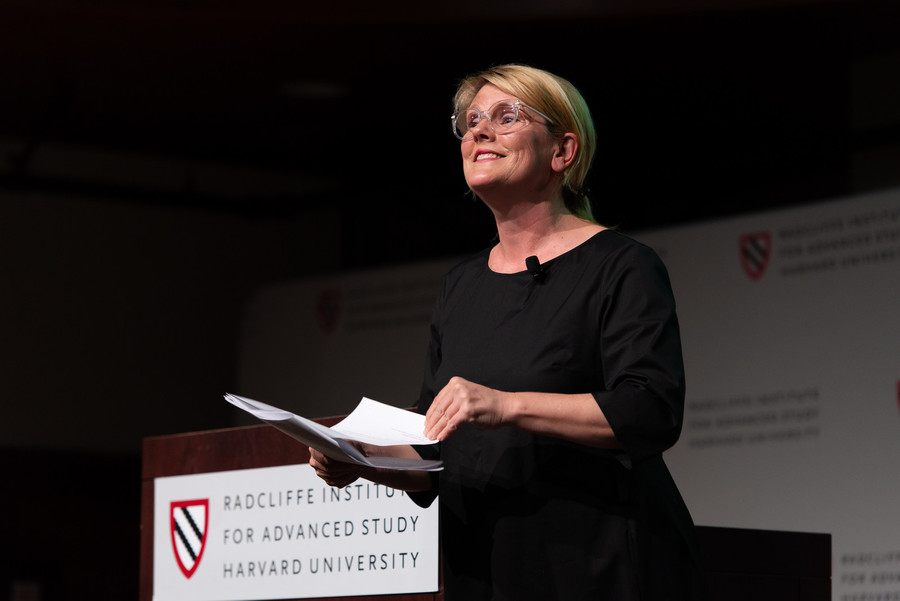
Your career is interwoven with interesting projects, but there are also numerous awards you have won for your work. How do you view all these successes and what are you most proud of? How many sacrifices are hidden behind each of them?
My projects were performed on every continent and in the most prominent concert venues and festivals, as well as in the most prestigious churches and the simplest, even abandoned places in both hemispheres. All these journeys and landscapes, both creative and physical, constantly undulating, all the social and intimate aspects were a challenging mission. This is a path full of joy and difficulty, numerous praises and doubts, swings… a constant motion. I am proud that I have been able to prove
that a choir represents an omnipotent, exceptional, versatile artistic corpus, comparable to a symphony orchestra, drama, or ballet, that it is a consummate artistic body that constantly opens new creative spaces, that we managed daringly and provocatively transformed a choir into the elite art form of the highest rank. Therefore, am I proud of the international Music Theatre Now awards, on Golden Mask, Prešeren Award, nomination for European theatre and other recognitions out of the choral world as such.
What awakens your creativity and whose work particularly inspires you?
Where do I get ideas from? They probably come when I am idle. Then ideas flow in and out, and some of them get stuck, so I arrange them into a box in my study room. Then comes collecting the material… a year or two per project.
How important is it to bring art closer to the common man and how can it help us cope with the challenges we face in this modern age?
I don’t necessarily believe that we should plan our art to meet the expectations of everyone or to plan how to bring it closer to the common man. Good art addresses the viewer directly. Art shapes our everyday lives, make a social statement or is enjoyed for aesthetic beauty. I see art as a wonderful emotional journey, a learning process and a unique form of contemplation and exploration.
How often do you visit Novi Sad and what do you think about a city like this winning the title of European Capital of Culture? You are a native of Maribor who took the same mantle 10 years ago, so can you tell us what it means for a city?
ECoC served as an extraordinary mirror to our society. And it brought so many outstanding exhibitions, performances, concerts, lectures, and other events! The harvest was so bountiful, that I doubt Maribor could even process it all. I believe many are not even faintly aware of what was on the menu that year. They also don’t realise that this was not something to be taken for granted. That it was unique and unrepeatable.
The level of culture of a given environment can’t be measured by a few prestigious events alone, nor by some formal aesthetic scale or the quantity of culture on offer (several thousand events per year mean nothing at all). It can’t even be measured based on economic, practical or social benefit, or the number of tourist buses or the hundreds of thousands of visitors. The level of a city’s culture can only be measured by its ability to raise its spirit toward grandeur.
Author: Marina Marić
Photos: private archive of Carmina Silec

